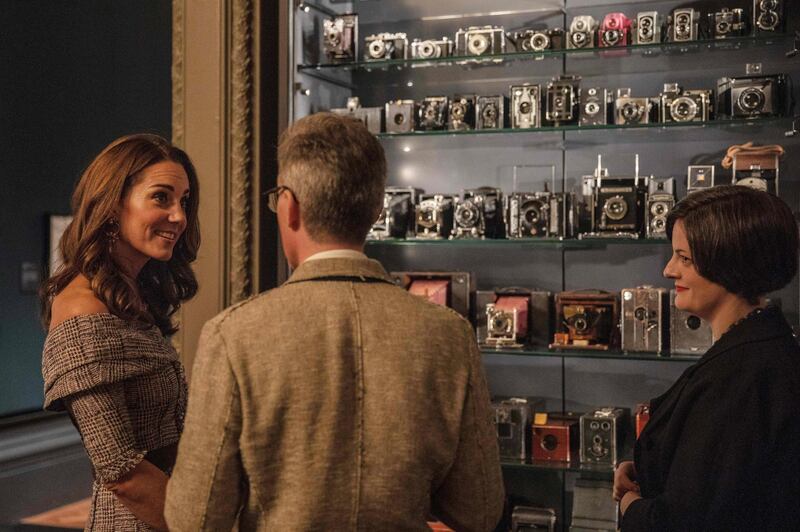London’s Victoria & Albert Museum opened its Photography Centre, consisting of four new galleries, this week, with the exhibition Photography Spotlight.
Charting two centuries of photographic history from the early pioneers to digital smartphone snappers, the exhibition “tells the story of photography as a way of collecting the world, from the medium’s invention to today,” V&A director Tristram Hunt says.
“In an era when everyone’s iPhone makes them a photographer, the V&A’s Photography Centre explores and explains the medium in a compelling way.”
Visitors enter the exhibition through an installation of more than 150 cameras that span a period of 160 years.
Those viewing the works are also invited to handle the devices and witness the improvements in technology – from an 1820s camera obscura through a 1920s Kodak No.2 Brownie to a 1930s Leica II rangefinder and 1970s Polaroid 1000 instant camera.
Through stereoscopic viewers, visitors can see 3D pictures from the 1851 Great Exhibition at Crystal Palace in London, and some of the earliest photographs of Japan.
Photography Spotlight also includes photojournalism, with 1930s copies of the United Kingdom's Picture Post magazine, which displays the harsh realities of war overseas.
The collection includes pictures donated by Paul McCartney, where were taken by his late wife Linda, herself a professional photographer. The pictures also include shots of 1960s stars such as Jimi Hendrix, The Yardbirds and model Twiggy.
The exhibition contains a selection of British photography pioneer William Henry Fox Talbot’s pictures and cameras, including an 1840s wooden tripod camera.
The new centre also includes a project space filled with works by German photographer Thomas Ruff, who has digitally reinterpreted Linnaeus Tripe’s 1850s paper negatives of India and Myanmar, bringing modern developing techniques to the landmark originals.
The catalyst for developing the new exhibition space and opening its four galleries was the transfer last year of the Royal Photographic Society’s collection of 270,000 photographs, 6,000 cameras and 26,000 books to the V&A.
The museum’s archive of more than 800,000 photographs is now one of the world’s largest and most important collections of historic and contemporary pictures.
A second section of the centre, due to open in 2022, will include a teaching space, browsing library and a studio for residencies by photographers.
AFP





